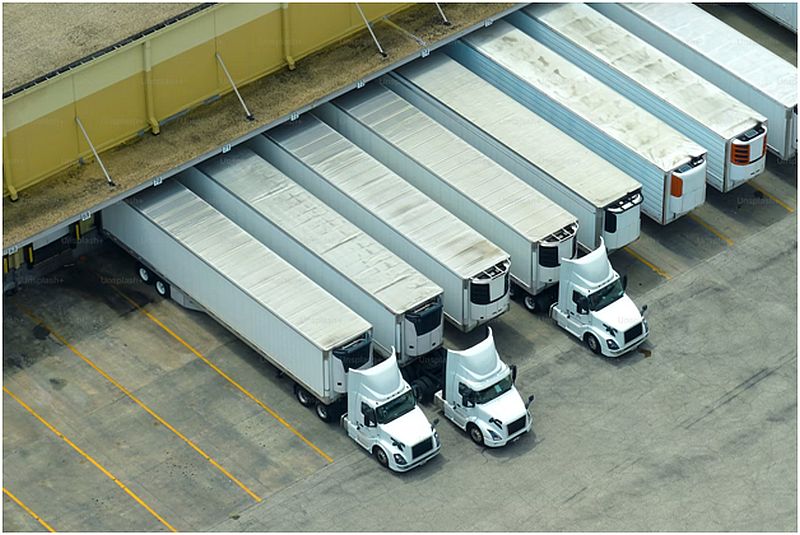The effective flow of goods is the lifeblood of our global economy in the fast-paced world of today. The pursuit of transport and load efficiency unites us all, regardless of whether you’re a business owner in charge of a delivery fleet, a logistics manager in charge of a vast transportation network, or just someone curious about the complex web of supply chains that enable modern life.
Transport and load efficiency aren’t just matters of convenience. They’re a fundamental driver of profitability and sustainability. The environment and the bottom line of a corporation can both be significantly impacted by every mile saved, pound optimized, and drop of fuel spared. It involves improving resource utilization, reducing waste, and coming up with more effective means of transporting goods.
As we go into the area of transport and load efficiency, we examine seven tried-and-true methods that can fundamentally alter the way you perceive transportation logistics. These strategies have been tried and tested and can be used by businesses of all sizes. They may transform your company’s operations, result in cost savings, and advance a more sustainable future.
1. Reduce Emissions
A typical passenger vehicle emits approximately 4.6 metric tons of carbon dioxide each year. Reducing emissions is a pivotal component of improving transport and load efficiency. The significance of reducing the carbon footprint of our transportation systems increases with increased consciousness of environmental issues. Emissions can be considerably reduced by switching to eco-friendly vehicles, utilizing alternative fuels, and implementing electric or hybrid technologies.
Moreover, implementing fuel-efficient driving practices and optimizing routes to minimize idling time also contribute to a greener fleet. By taking deliberate steps to reduce fleet emissions, businesses can not only meet sustainability goals but also benefit from reduced fuel costs and improved brand reputation in an increasingly eco-conscious world.
2. Route Optimization
One of the fundamental aspects of transport efficiency is route optimization. Planning the most efficient routes for your vehicles can significantly reduce fuel consumption and delivery times. Utilize modern route planning software that takes real-time traffic data, weather conditions, and vehicle capacity into account to ensure your drivers take the most efficient roads. By minimizing unnecessary detours and reducing idling time, you can save on fuel costs and reduce your carbon footprint.
3. Load Consolidation
Load consolidation is a strategy that involves combining multiple shipments into one load when possible. You may make the most of each vehicle’s capacity and cut down on the number of trips required by combining shipments that have similar destinations or delivery routes.
This reduces wear and tear on your vehicles, saving you money on maintenance costs and gas at the same time. Implementing load consolidation requires efficient scheduling and coordination but can lead to substantial savings in the long run.
4. Vehicle Fleet Management
Managing your vehicle fleet efficiently is another key factor in improving transport and load efficiency. Implement a preventative maintenance schedule to keep your vehicles in top shape and lower the likelihood of failures and expensive repairs. Investing in cutting-edge fleet management tools like GPS tracking and telematics systems is another idea if you want to keep an eye on vehicle performance, driver behavior, and fuel use in real time.
These systems provide valuable data for optimizing routes, reducing idle time, and improving overall fleet efficiency.
5. Load Balancing Technology
Load balancing technology involves optimizing the distribution of weight within a vehicle’s cargo hold. Unevenly distributed loads can negatively affect a vehicle’s stability, fuel efficiency, and overall safety.
Implement load-balancing technology to ensure that your shipments are evenly distributed, reducing the risk of accidents and improving fuel efficiency. This technology can include load sensors, automated load-shifting systems, and real-time monitoring to make adjustments as needed during transport.
6. Sustainable Packaging
In addition to optimizing transport, you can also improve load efficiency by reevaluating your packaging practices. Switching to eco-friendly packaging materials can reduce both the weight and volume of your shipments, allowing you to transport more goods in each load.
Consider using smaller, more compact packaging designs and exploring sustainable options like recyclable or biodegradable materials. Reducing packaging waste not only saves space but also demonstrates your commitment to sustainability, which can be a selling point for environmentally conscious customers.
7. Collaboration and Consolidation

Collaboration and consolidation within the logistics industry can be game-changers for improving transport and load efficiency. Consider forming partnerships or joining logistics networks that enable you to share resources and consolidate shipments with other businesses.
This approach allows for better utilization of vehicles and reduces the number of partially empty trucks on the road. Collaborative efforts can also help negotiate better rates with carriers and optimize delivery schedules, leading to cost savings for all involved parties.
Final Words
In today’s competitive and environmentally conscious business landscape, improving transport and load efficiency is not just a smart move; it’s a necessity. Implementing these seven proven methods can lead to significant cost savings, reduced environmental impact, and enhanced customer satisfaction.
You can stay ahead of the competition, achieve sustainability goals, and help the industry move toward a greener, more efficient future by consistently looking for methods to optimize your transportation and logistics processes. Keep in mind that the secret to success is a persistent dedication to innovation and optimization, guaranteeing that your company is flexible and sensitive to changing market demands.
Article Submitted By Community Writer




